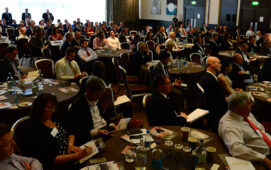REGnosys has contributed its proprietary language, formerly known as the Rosetta DSL (Domain-Specific Language) and now renamed Rune, to the Fintech Open-Source Foundation (FINOS). This move is part of REGnosys’s broader mission to foster industry-wide collaboration and innovation in regulatory reporting through open-source solutions.
Rune, the language underpinning REGnosys’s digital regulatory reporting solution, is now governed by FINOS. This open-source initiative allows for contributions, testing, and sharing of regulatory logic in a system- and technology-agnostic manner.
Rune integrates seamlessly with REGnosys’s Rosetta, an award-winning data modelling platform also available for free to the community. This integration enhances the platform’s capabilities, making it a robust tool for regulatory reporting.
Major financial institutions, including BNP Paribas, JP Morgan Chase, Standard Chartered, Pictet, and DTCC, are supporting and implementing Rune-powered projects. These projects aim to enhance operational efficiency and resilience in regulatory reporting.
Rune has been successfully deployed in production for ISDA’s Digital Regulatory Reporting (DRR) programme, which uses the Common Domain Model (CDM) to express trade reporting rules as machine-executable code.
Leo Labeis, Founder and CEO of REGnosys, emphasizes the vision of community-driven compliance. Eleanor Kelly, Global Head of Markets Regulatory Change and Control at JP Morgan Chase & Co., highlights the benefits of expressing data requirements through open-source technology.
Syed Ali, Managing Director of Repository & Derivatives Services at DTCC, supports the use of standardized, machine-readable logic for regulatory reporting.
Scott O’Malia, Chief Executive of ISDA, praises the cost-effectiveness and accuracy of the ISDA DRR. Jane Gavronsky, Chief Operating Officer at FINOS, welcomes Rune to the FINOS portfolio and emphasizes its potential to revolutionize regulatory reporting.
Key Features of Rune (Rosetta DSL)
Rune enables a unified representation of data and business logic, allowing various financial market applications to communicate effectively. It abstracts business logic from technical implementation, ensuring that the logic remains consistent and comprehensible across different systems.
The language is designed to be accessible to non-programmers, such as operations and compliance professionals, who can directly write regulatory logic. This accessibility helps bridge the gap between domain experts and IT implementation.
Rune is built to be technology-neutral, leveraging the Eclipse Modelling Framework (EMF). This ensures that models can be represented in a standard format (Ecore) and easily integrated into various technology stacks, whether on-premises, cloud, or hybrid environments.
The Rosetta platform includes code generators that translate models written in Rune into executable code. This automation simplifies the deployment of regulatory logic across different programming languages and systems, enhancing operational efficiency and accuracy.
As an open-source project under FINOS, Rune encourages community contributions. The platform provides a collaborative environment where users can create, edit, and share models, fostering industry-wide cooperation and innovation in regulatory reporting.
Rune has been deployed in production for regulatory reporting, particularly within ISDA’s Digital Regulatory Reporting (DRR) programme. It uses the Common Domain Model (CDM) to express trade reporting rules as machine-executable code, enhancing transparency and compliance across global financial institutions.
Leading financial institutions such as JP Morgan Chase, BNP Paribas, and DTCC have implemented Rune-powered solutions to improve their regulatory reporting processes, demonstrating the language’s practical benefits in real-world applications.
The Rosetta platform, which includes the Rune DSL, offers a comprehensive solution for developing, testing, and deploying regulatory models, providing tools for design, data translation, deployment, and monitoring. This integrated approach ensures that firms can manage their regulatory obligations more effectively, leveraging the power of open-source collaboration to stay ahead of evolving compliance requirements.
Subscribe to our newsletter



